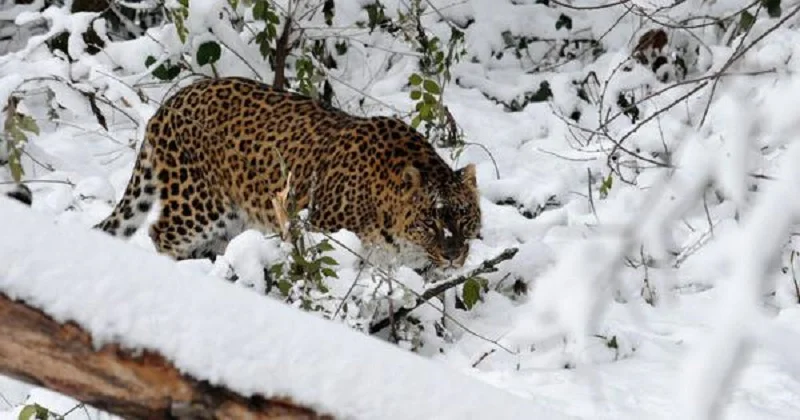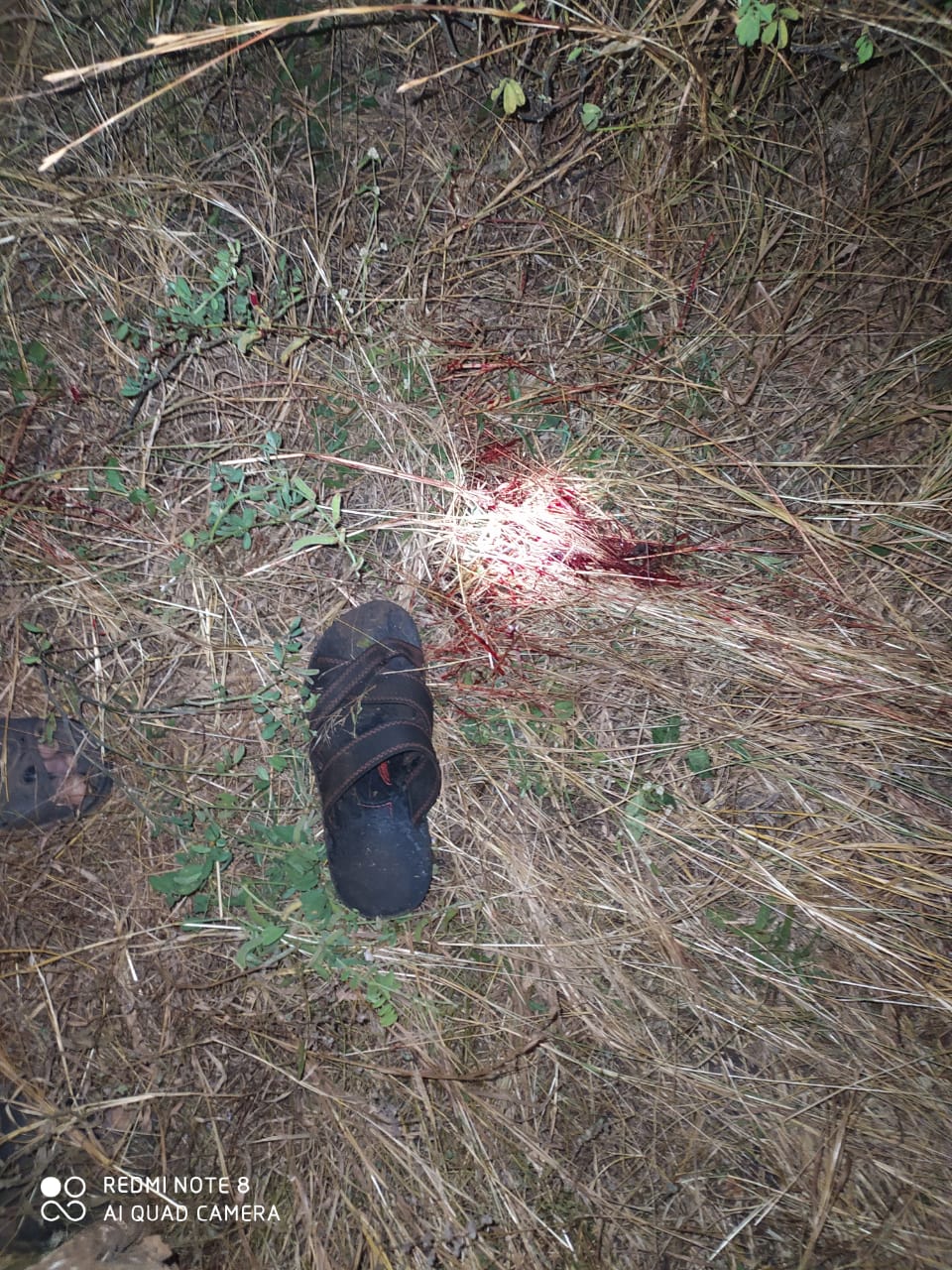
By R. Raj Rao
THIS week, a Leopard was spotted in a residential area of Srinagar. The news about the magnificent beast roaming freely in Baghe Mehtaab area had scared people into the safety of their homes and had even raised an alarm in the adjoining areas. The leopard was finally caught by the wildlife department in an abandoned house, after it had jumped walls and been chased by people. This tussle between man and the wild is not new and certainly not restricted to Kashmir alone.
https://www.youtube.com/watch?v=orOlkRf04xc
Recently, I toured villages in rural Maharashtra where a man-eating leopard killed a dozen human beings. The beast travelled hundreds of kilometres through five districts of the state over a period of months, devouring men, women and children along the way. I met the families of two such victims who were killed earlier this month. One was a nine-year-old girl, daughter of a farm labourer. The animal pounced on her in broad daylight as she played in a banana field, where her parents and other labourers were at work. She died instantly. The other victim was a 35-year-old woman, mother of three small children. The leopard killed her as she took their cattle for grazing atop a forested hillock where their house is situated. As sunset came, her distraught husband and in-laws who went in search of her found her severed head just a few meters away from their house. They were visited by local politicians and given a cheque of Rs 4 lakhs as compensation; a cheque that they still haven’t encashed.

The leopard was finally shot dead by sharp-shooters in a leafy banana farm on the very day I was in the villages, leading conservationists to ask if shooting it, instead of tranquillizing it and capturing it alive, was indeed the right strategy.

Two years ago, a similar controversy had arisen in another part of Maharashtra, which made national headlines. The man-eater in this case was a tiger, India’s national animal, to save which the Government of India has spent millions of rupees. Its killing by a ‘trigger-happy’ sharp-shooter from Hyderabad led to an ugly face-off between Maneka Gandhi, the then Minister of Environment and Forests in the Modi 1.0 government, and the state Minister of Environment and Forests who ordered the shooting; especially as the animal was a female named Avni with two cubs. The case, to the best of my knowledge, is still in the courts.
Villagers, however, whom I personally met and interviewed for two newspapers, were relieved that the tiger was killed. They felt that city-based environmentalists and wild-life activists lived in ivory towers, and had no idea of the dangers they suffered when predator animals entered their villages and stalked them, making it impossible for them to get out of their houses after dark, even to answer nature’s call. They vehemently refuted the view that it was they who had encroached on the animals’ territory. Their villages had been there for decades, if not centuries, they pointed out.
Though the above incidents occurred in Maharashtra, man-animal conflict, as the media calls it, isn’t restricted to any particular state. It exists throughout India, from Jammu & Kashmir in the north, to Karnataka, Kerala and Tamil Nadu in the south, wherever villages lie in close proximity to forests.
Human beings are regularly killed by man-eating tigers in the Sunderbans in West Bengal and Bangladesh. The deceased are usually honey-gatherers who risk their lives sailing to islands in the delta to collect honey. But they have no option as this is their only source of livelihood. It is said that if a man in the Sunderbans is unlucky enough to be killed by a tiger, his wife becomes a ‘tiger widow’ and is ostracized by the community. Hence, before setting out for the islands, the men pray to a goddess known as Bon Bibi to bring them back to their wives safe and sound. Unlike elsewhere in India, where orders are issued by forest officials to shoot man-eating tigers and leopards, the man-eaters in the Sunderbans are so numerous that they cannot be eliminated. So the poor villagers learn to live with them.
The tradition to shoot man-eaters began in the Kumaon, now in the state of Uttarakhand, at the beginning of the 20th century with Jim Corbett, after whom India’s largest national park, the Jim Corbett National Park, is named. Corbett was an Englishman who was born in Naini Tal and lived there till the time of Independence. Conservation was indeed a conundrum for him, as he was torn between the need to save the lives of hapless villagers traumatized by man-eaters, and simultaneously protect the region’s wildlife. He evocatively describes accounts of his brush with predator animals in his books, Man-Eaters of Kumaon, The Man-Eating Leopard of Rudraprayag, and many others.
In one case, a man-eater known as the Champawat tiger killed over 600 human beings in Nepal and North India before Jim Corbett shot it dead. Dane Huckelbridge recently wrote about the Champawat man-eater in his book No Beast So Fierce. In it, he explains the reasons for the tiger becoming a man-eater in the first place: the loss of one of its canines as a hunter unsuccessfully tried to kill it.
As a writer who has frequently travelled to the hinterland to meet sorrowful villagers whose loved ones have been killed by wild animals (a thing unthinkable to those of us who comfortably live in cities), I find myself in the same dilemma as Jim Corbett, and so many other humanists. What should come first, man or animal?
I daresay that this is a question that merits no easy answer.
The views expressed in this article are the author’s own and do not necessarily reflect the editorial stance of Kashmir Observer
- Dr. R. Raj Rao is an internationally known Indian English novelist, poet and critic. He was Professor and Head of the Department of English at the University of Pune in Maharashtra. He has also been a Visiting Professor at universities in Canada and Germany
Follow this link to join our WhatsApp group: Join Now
Be Part of Quality Journalism |
Quality journalism takes a lot of time, money and hard work to produce and despite all the hardships we still do it. Our reporters and editors are working overtime in Kashmir and beyond to cover what you care about, break big stories, and expose injustices that can change lives. Today more people are reading Kashmir Observer than ever, but only a handful are paying while advertising revenues are falling fast. |
| ACT NOW |
| MONTHLY | Rs 100 | |
| YEARLY | Rs 1000 | |
| LIFETIME | Rs 10000 | |












